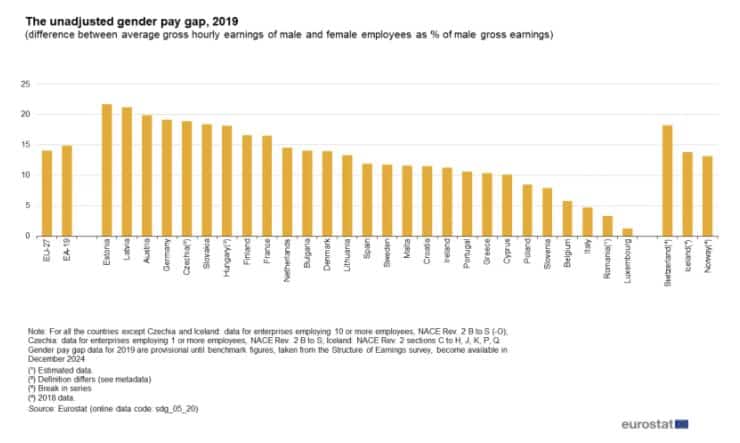
(Un)Equal Pay Day: for a decade now the gap remains the same in EU
Women work more and earn less; they receive lower salaries, which results in even lower pensions, jeopardizing their ability to support themselves and to have a decent level of quality in their lives.
The EU’s Equal Pay Day falls on 10 November and it is supposed to mark the day when women stop getting paid, until the end of the year, compared to their male colleagues for the same job. The EU announcement adds the word ‘symbolically’, but unfortunately it is actually literally that women work at least two extra months for free.
The numbers are as shocking today as ever:
On this European Equal Pay Day – or should we call it Unequal Pay Day – the European Commission reports that, even though the right to equal pay for equal work between men and women has been introduced in Europe since 1957, the average pay gap across countries is 14% (and has only changed minimally over the last decade), while the average pension gap is 30%!
The gender overall earnings gap, which measures the combined impact of the average hourly earnings, the monthly average of the number of hours paid (before any adjustment for part-time work) and the employment rate, stood at 36.7% in 2018.
The gender employment gap stood at 11.7% in 2019, with 67.3 % of women across the EU being employed compared to 79% of men (EU27 data).
And, even though, EU and the member states have tried to achieve a better work-life balance between men and women, (with a Directive adopted in April 2017), the reality is that women bear most of the responsibility for the unpaid care work at home: taking care of children, elderly parents, cooking and cleaning activities, that add to their workload and contribute to the inequality (1 out of 3 women takes a 6+ months childcare career break vs 1 out of 100 men).

Why Women earn less
The gender pay gap measures a broader concept than pay discrimination and comprehends a large number of inequalities women face in access to work, progression and rewards. They are:
- Sectoral segregation: Around 24% of the gender pay gap is related to the overrepresentation of women in relatively low-paying sectors, such as care, health and education. Highly feminised jobs tend to be systematically undervalued.
- Unequal share of paid and unpaid work: Women have more work hours per week than men but they spend more hours on unpaid work, a fact that might also affect their career choices. This is why the EU promotes equal sharing of parental leaves, an adequate public provision of childcare services and adequate company policies on flexible working time arrangements.
- The glass ceiling: The position in the hierarchy influences the level of pay: less than 8% of top companies’ CEOs are women. Nevertheless, the profession with the largest differences in hourly earnings in the EU were managers: 23 % lower earnings for women than for men.
- Pay discrimination: In some cases, women earn less than men for doing equal work or work of equal value even if the principle of equal pay is enshrined in the European Treaties (article 157 TFEU) since 1957.

What EU is proposing
EU is trying with several initiatives and direto tackle the problem – which remains sadly stable over the years – with a series of
Workers:
- Information about pay-level at job interview
- No obligation to disclose previous pay history
- Information on average pay levels for the same work during employment
- Right to full compensation for gender pay discrimination, including recovery of back pay and legal fees
- Individual and collective claims on equal pay
Employers [with +250 employees]:
- Public reporting of gender pay gap
- Internal reporting on pay differences among female and male workers in the same category Joint pay assessment if gender pay gap in the same category of workers is more than 5% and not justifiable on objective gender-neutral factors
- Easier to identify hidden or non-intentional pay inequalities
- Opportunities to attract and retain the best talent
Moonshot News is an independent European news website for all IT, Media and Advertising professionals, powered by women and with a focus on driving the narrative for diversity, inclusion and gender equality in the industry.
Our mission is to provide top and unbiased information for all professionals and to make sure that women get their fair share of voice in the news and in the spotlight!
We produce original content, news articles, a curated calendar of industry events and a database of women IT, Media and Advertising associations.




